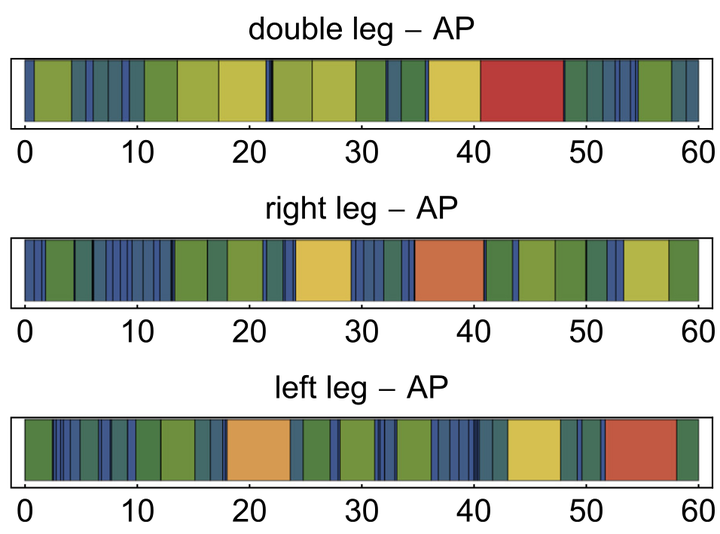
Abstract
Center of pressure (COP) signals have been widely used to investigate various aspects of human balance during quiet standing. Here, we compute a set of measures - including burstiness, memory and local variation - to quantify temporal patterns in COP zero-crossings. Specifically, we investigate the effect of stance type (bipedal and unipedal) on the proposed measures. Data were obtained from a group of 20 health and young subjects. The results suggest that these measures are able to detect differences in zero-crossing patterns between bipedal and unipedal stance. We also perform a test-retest reliability analysis for each measure and a pairwise correlation analysis for combinations of measures. Finally, we discuss some potential implications of our results for the study of human balance.